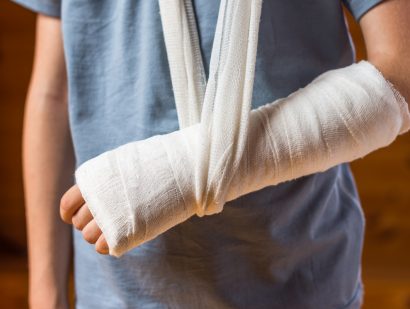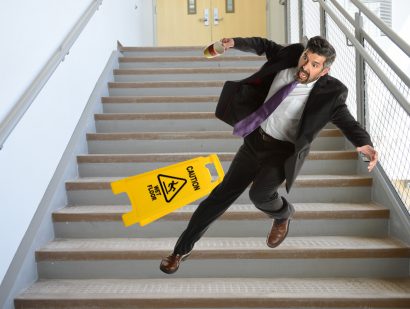- Find A Medical Provider
- Auto Injuries
- Common Injuries
- Medical/Pharmaceutical
- Types of Medical Injuries
- Malpractice Injuries
- Drug and Medical Device Injuries
- Drugs and Devices Linked to Cancer
- Opioid Addiction
- Drugs and Devices Known to Cause Injury
- 3M Combat Arms Earplugs – Hearing Loss
- Accutane
- Aciphex
- Actonel
- Actos
- Adderall and Ritalin
- Advair
- Aldara (Imiquimod)
- Alli
- Ambien
- Amiodarone
- Anzemet
- Aptivus
- Aranesp
- Arava
- Atorvastatin
- Avandia
- Benicar
- Birth Control Medication
- Blood Thinners
- Essure
- Fosamax (Alendronate Sodium)
- Gadolinium-Based MRI Contrast Agents
- Granuflo
- Hernia or Surgical Mesh Injuries
- Hydroxycut
- Inferior Vena Cava Filters
- Invokana Toe and Foot Amputations
- Ketek
- Levaquin
- Lipitor
- Mirapex
- Neurontin
- Onglyza
- Over-the-Counter Medications
- OxyContin
- Paxil
- Power Morcellators
- Pradaxa
- Propecia
- Reglan
- Talc Powder
- Trasylol
- Valsartan
- Viagra
- Xolair
- Zelnorm
- Zoloft
- Work Injuries
- Sports Injuries
- Marketing Services
- Blog
List your practice on InjuredCare | Log in / Sign up
Back Injury

Back injuries are all too common, with 4 of 5 adults experiencing a back injury within their lifetimes. Our backs experience a significant amount of strain, whether through everyday activities or acute injuries. Work, sports and recreational activities, and car accidents account for the majority of back injuries that are treated.
Common back injuries include:
- Pain and strain - From minimal aches to pulled muscles, pains and strains are the most common back injuries. Minor pain may resolve itself within hours of rest, while strained back muscles can last for weeks.
- Sciatica - Chronic low back pain is typically categorized as sciatica. Sciatica results from degeneration, severe strain, or disc trauma. Named after the sciatic nerve that feeds into the lower spine, sciatica presents as nerve pain. This type of pain can feel like a burning, numb, or tingling sensation. The sciatic nerve is the largest nerve in the body and stretches from the low spine down through your entire leg. As a result, sciatica can produce pain anywhere from the low back all the way to your toes, depending on its severity.
- Herniated discs - Your spine consists of vertebrae and vertebral discs, which help protect vertebrae by absorbing pressure and promoting flexibility. The interior of the disc will slip through its tough exterior and into the spine. This can occur over time or as a result of trauma. The result can be mild and not produce symptoms, or it can result in painful nerve pressure. A set of vertebrae without vertebral discs are also more prone to arthritic swelling and pain, or injury.
- Vertebral fracture - When vertebrae weaken over time, or experience immense pressure, they can fracture. This can cause immediate acute pain that is likely to be chronic. The loss or diminishing of a vertebrae will leave the spine susceptible to injury and malformation (leading to poor posture).
Back injuries are challenging for a number of reasons. First of all, we use our backs constantly, which means that even minor aches and pains result in consistent discomfort throughout the day. Even while sitting, our back muscles assist in maintaining healthy posture. Additionally, we use our backs to lift, twist, and bend. Larger and more significant injuries can leave you immobilized. This makes it nearly impossible to sustain your daily routine if your back pain becomes chronic or reaches a severe level.
Are back injuries expensive?
The finances of back injuries will certainly add to your frustration. Each year $50 billion is spent in the US to treat back pain. For employees and employers, back-related injuries can lead to a significant loss of work productivity. 264 million days of work are lost each year due to back injuries in the US alone.
Physical discomfort is not the only source of stress when a back injury occurs. Treatment is often a slow and steady process. In 5% of back injuries, symptoms become chronic and debilitating. Pain killers, chiropractic adjustments, and rest are the go-to treatments for pain and minor ailments. Medical expenses can add-up, and extended time off work can create additional financial pressure.
Common causes of back injuries
You may associate injuries with severe accidents or incidents of blunt trauma; however, back pain isn't caused only by car wrecks, falls from heights, or football tackles. In fact, a recent study found that 54% of work-related back pain occurs in employees that sit for a majority of their workdays. While desk workers may not be at greater risk of experiencing back pain than laborers, you should always be aware of back pain, weakness, or tightness to ensure they aren't underlying signs of something more serious.
Here are some of the most frequent sources of back injuries:
- Workplace incidents - Back injuries are the most common form of workplace injuries, with 1 million cases occurring each year, about 20% of all work-related injuries. It's estimated that 1/3 of these injuries could be prevented with more ergonomically-designed workspaces.
- Sports injuries - Competition can push our bodies to the limit. Extreme sports and contact sports can also lead to unnatural situations that place excessive force on our backs. No scenario is worth injury. Stay alert and listen to your body to avoid unnecessary back strain or trauma.
- Slips and falls - In a fall from a ladder or steps, or during icy weather, your back can be subject to a hard landing. Protect your back as much as possible by maintaining your footing to the best of your ability.
- Overexertion - Trying to do too much, using improper while exercising, or absentmindedly performing a task all can result in an overexertion back injury. Overexertion injuries range from mild pain to severe dislocations. No task is worth the risk of chronic back pain. Take your time, exercise caution, and always listen to your body to prevent these types of back injuries.
- Car accidents - Accidents, by definition, are unplanned. No matter who is at fault, back injuries are common when vehicles collide. A jarring crash can leave drivers or passengers with chronic back pain and potential fractures, while even mild fender benders can lead to bruising and muscle soreness.
How back injuries are treated
Your back is a large musculoskeletal network of bones, muscles, and tendons. At its core, your back houses your spinal cord, which can make treating a back injury tedious at best and precarious at worst. Ideally, an injury will resolve itself with rest and light physical therapy. As an injury worsens, more intervention is required. Medical providers that commonly treat back injuries include:
- Chiropractors
- Emergency room personnel
- Massage therapists
- Naturopathic doctors
- Neurologists
- Primary care physicians
- Sports medicine practitioners
- Surgeons
Surgery is very rare for back injuries, but when it is required, you should seek the care of a trusted spine surgeon. Our spinal cords act as a roadway for our brains to send directions to the rest of our bodies. Spine injuries can result in severe discomfort and potential paralysis.
Treating minor back injuries
Minor back injuries are ailments that typically don't require a lot of intervention. Aches, strains, mild spasms, and bruises fall under this category. These injuries should be self-healing as long as you rest and avoid exacerbating your symptoms. If swelling is present, ice or anti-inflammatory medication can expedite your recovery. Light movement and stretching will help relieve stiffness and inflammation as well. You may want to consult a chiropractor or your general practitioner at this stage of back pain. A massage can also help work out discomfort.
Treatment for moderate back injuries
With more severe back injuries, pain levels rise or spread to other areas of the body, mobility becomes impacted, or symptoms persist beyond a 24-48 period. Moderate back injuries still include aches, strains, and bruises but also include chronic pain and mild sciatica. If left untreated, some moderate back injuries may correct themselves with rest or more committed care of the affected area. However, it's best to seek the assistance of a medical provider once symptoms become moderate in order to speed up recovery and ensure that no underlying conditions are present. A chiropractor is a great place to start, as they specialize in musculoskeletal conditions, primarily back injuries. A primary care physician, sports medicine specialist, or naturopathic doctor can also diagnose and treat most forms of back discomfort.
Treatments may include prescription pain-killers, muscle relaxers, physical manipulation, chiropractic adjustments, physical therapy, stretches, and lifestyle guidance.
Treating severe back pain/injuries
Signs of a severe back injury include severe pain, persistent pain, numbness or tingling (especially if it radiates down one or both legs), immobility, fever, trouble going to the bathroom, and a disturbance to your daily routine or sleep pattern. Injuries like ruptured discs, dislocations, swelling around the spine, nerve damage, chronic back pain, and sciatica result in severe discomfort and require immediate medical intervention. A hospital, chiropractor's office, or orthopaedic surgeon should have the diagnostic equipment to inspect your spine and confirm the full extent of your injuries. By seeking prompt medical attention, you'll establish the best treatment plan and avoid placing your well-being at further risk.
If you are experiencing back discomfort or have recently injured your back, review our directory of injuries to find the best medical provider for your specific needs. Don't wait for your symptoms to worsen. Your condition may be entirely reversible with proper care.









